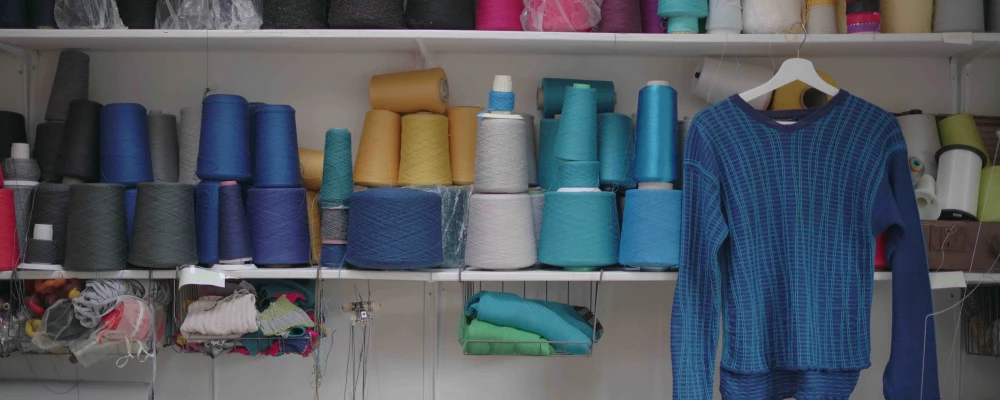
In Conversation With Valentina Karellas: Waste Yarns Into Made To Order London Knitwear
We first came across Valentina in February this year when we received a lovely professional and caring email from her on our ticket desk, introducing who she was and her work, plus a suggestion of an upcycling workshop after seeing the one we hosted with Emma of Socko. Unfortunately, the plans we had started making for the workshop had to stop being made. In the interim, Valentina's website is now full to the brim with the most beautiful of pieces that could honestly bring tears of joy.
As someone who dabbled with knitwear during my fashion degree, I understand the attention that is needed to create even the simplest of pieces. But, even to someone unaware of the amount of steps - and time - needed to build what we would class an an "everyday staple", Valentina's designs stand out as being considered and emotional. Valentina uses solely surplus yarns, or "deadstock", and produces made to order knits in her London studio. They are gender-neutral, utterly playful, and the craftsmanship is that "spot on" hand gesture.
We caught up with Valentina to see how the business was doing, and decided to ask a few questions on her perspective on surplus yarns, engagement in knitwear repair, and designing such radical sweater artworks.

Because your designs are so 'out-there', being not your standard piece of knitwear and more like an artwork, what's your starting point? Is it based on the surplus yarn you have, a swatch test you did, the way you're feeling that day?
Essentially a bit of everything you just said, it takes a couple of months to develop my ideas from sketch to swatching, playing with the yarns I have and finding what else is available, as well as stitches I want to try and include. Usually the ideas start out so much bigger and more flamboyant until I realise it takes too long, so I tone it down. The part I have the most fun, is playing with different stitches, tension testing and constantly playing with what the machine can do.
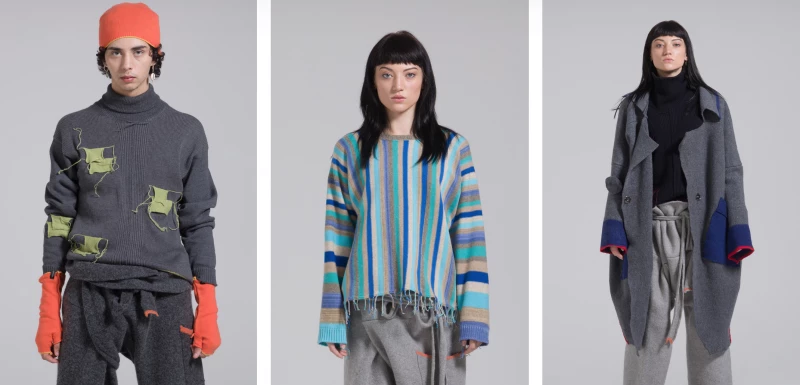
Is finding surplus yarn a full-time job, or have you now got connections to keep you supplied?
Initially when I started out yes it did take some time to find a supplier of dead stock, but I use one UK-based supplier that is family run and we have built a good relationship that I get calls when bright colours come in, as these are harder to get as deadstock.
Do you have a number on the amount of designs you can produce before you run out of a particular one - or do you generally design, make a sample, shoot and then sell only one more copy so that they're unique?
Yarn is limited, so I knit a sample, photograph it, add it online and when an order is made, that's when I knit it, when that yarn is finished, I try to get more, but when its done, its gone, so that means no more of that piece can be made, which adds to the uniqueness to the pieces.
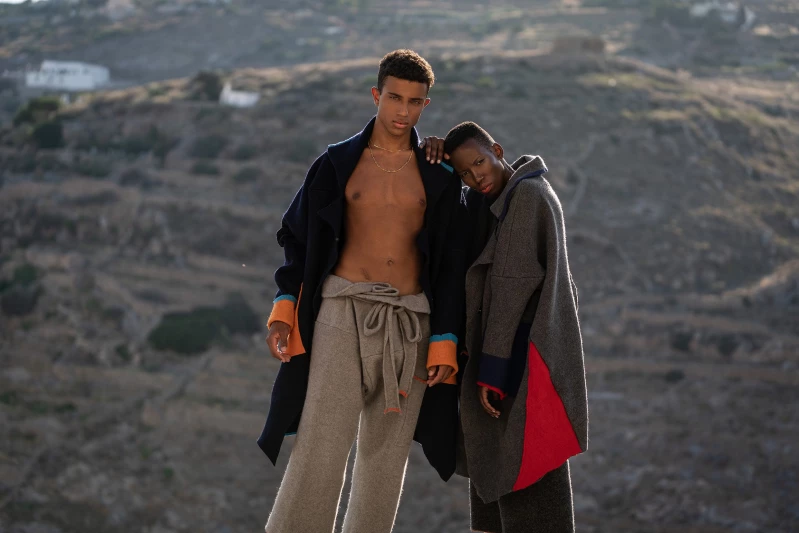
Would you keep the design and re-create in a new similar yarn?
Generally no, I like to change things up, however, I will soon release an exact design in a different yarn and colour of the Walton Jumper, from merino to cashmere, based on the fit will be so different. I'm excited to see peoples' reaction to it. [Note from Steph: This one is my favourite for the shape, the textures, the layering. But Valentina says that it has 11 separate panels and can take 10 hours to even just link them up].
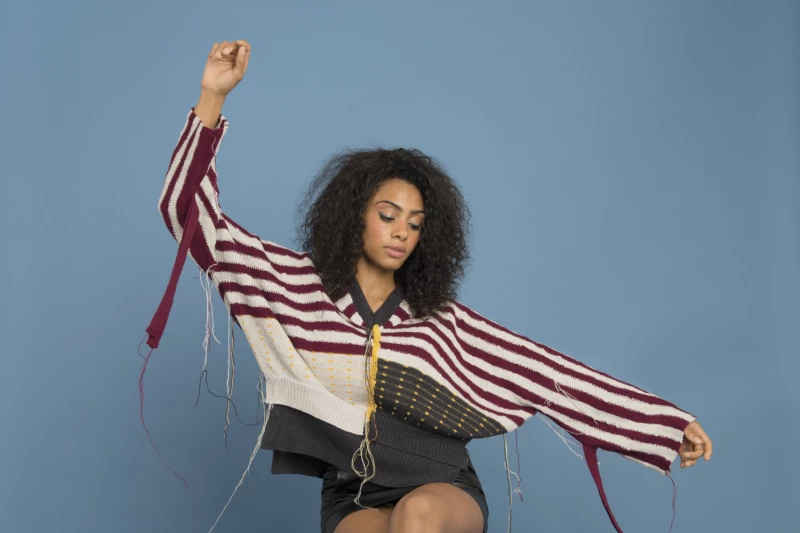
You describe yourself as "made of london" - do you think that if you moved elsewhere, your designs would take on a new persona?
As it's a play on words that I am of London, anywhere I am it will always be a part of me. Although no plans to move - my machines are too heavy! I do feel, as designers, you do gain inspiration from what is around you, so perhaps if I did work elsewhere there will be an evolved look that I'm sure I will pay homage to in varying ways.
You use surplus yarns from factories, so this is yarn that has been overstocked i.e. over-ordered by the buyer. Do you think there would be a time when the right amount could be purchased to avoid this overstock in the first place?
This is exactly the problem with the macros of the fashion world; there are so many elements and tiers that are involved in making and ordering. I believe it's very possible to order what you need, especially with large companies who have so much sales data and analysis. The issue is also that mills create a scale of economy for brands, that if they order a larger amount then it will be cheaper, so in essence it's cheaper to buy more and throw it, which is a huge issue with the fashion industry.
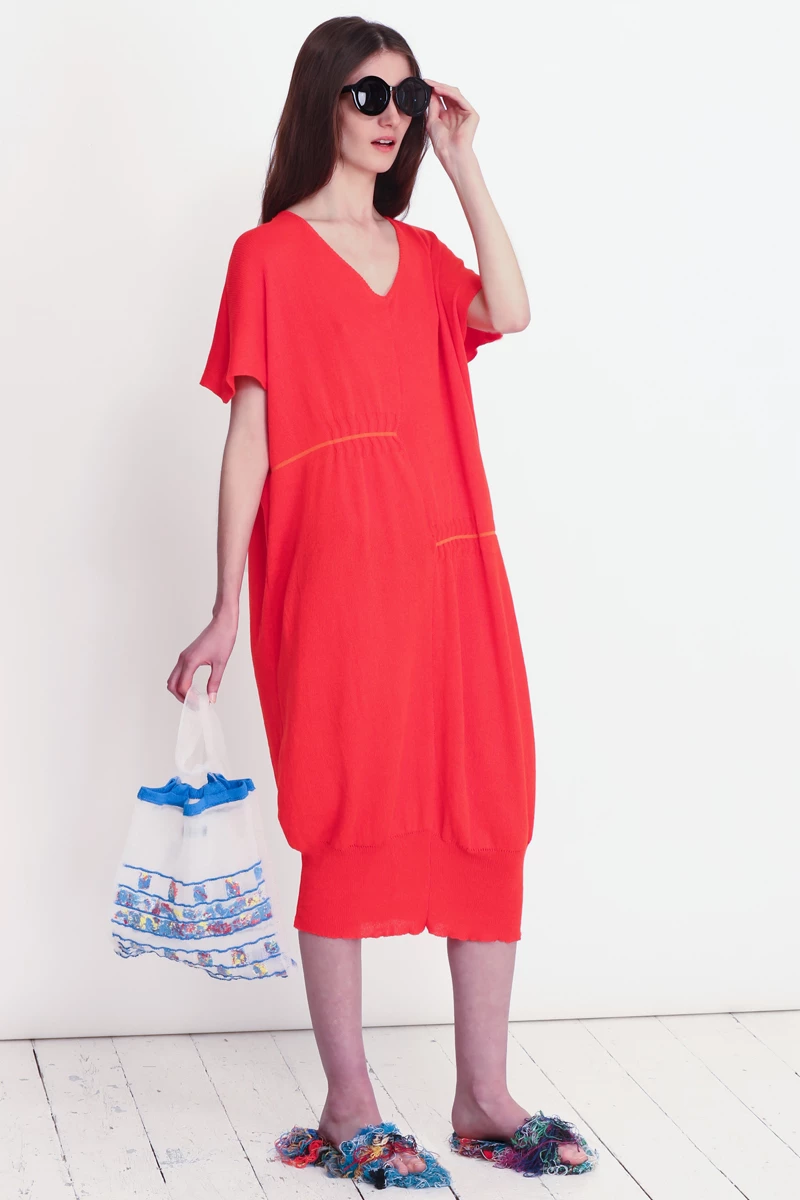
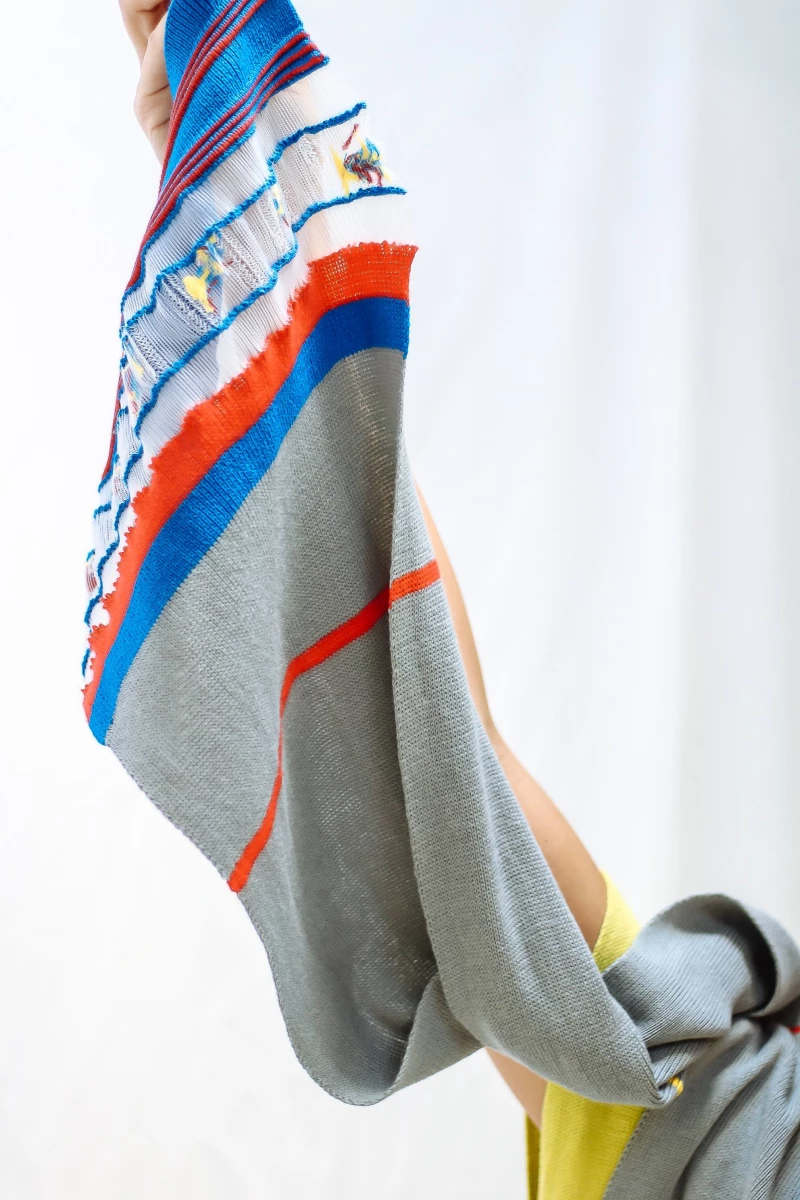
The Clenston Dress Untrend Vision Vol.4 SS18 and The Gladwyn Scarf Untrend Vision Vol.2 SS17 - featuring transparent pockets of studio floor waste
You run workshops and over lockdown did live stories to showcase personalisation, visible mending, needle felting for repair and therefore also educate on caring for knits. You obviously see the beauty in visible repair, showcasing the way something has been made, and also the necessity in mending to keep an item in use - but what do you think is the main obstacle to the non-crafter in mending and repairing?
I would say it's a mixture time people assume it takes to mend something, lack of knowledge/skills to mend and simply low interest in craft work, however I have found when I have taught workshops, the people that had the least confidence in mending, ended up with lovely mended pieces.
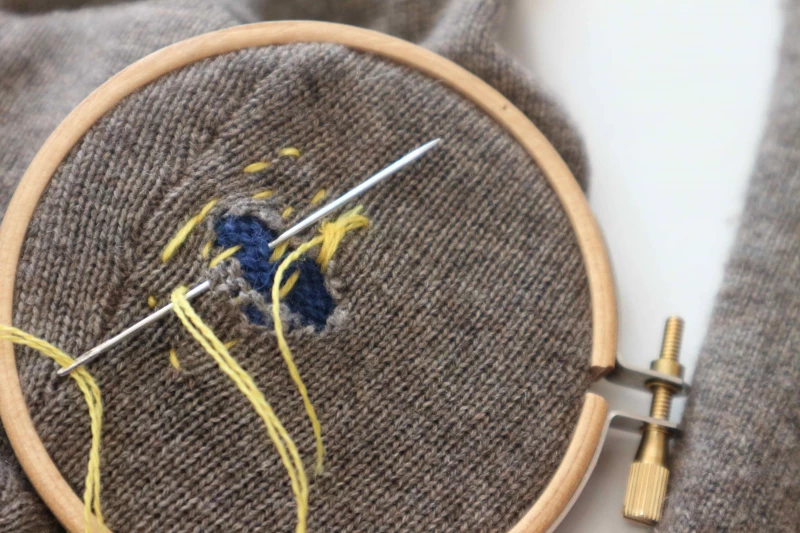
What would be your tip to someone with a jumper or accessory that they have mended so much they can't stand anymore, or to someone with an item that is so moth eaten they can't face mending it?
Great question, as I can imagine a lot of people have made the effort to mend to death and had enough, so I would say upcycling and utilise in a different way, whether its as simple as cutting up and using the item as rags to clean the house, or upcycling into a bag to store bits inside, make cushion covers, cut up even more to make Christmas decorations or teddy bears etc. There is always something you can do to an item. I would say the ones with extreme moth holes still can be mended by applique and patchwork. Friends and family have given me such damaged woollen jumpers that I threw them in the wash on a high heat and this made it felt slightly, which secures the edges and kills any eggs remaining, then I cut them up and made them into mittens.
Learn from Valentina:
How to needle felt for visible mending
How to take care of your knits
How the knits are made [film by Tushar Rajan Sharma]
Valentina also offers a visible mending service if you just can't face doing it yourself.
Find Valentina:
Website: www.valentinakarellas.com
Instagram: @vkarellas
Facebook: @valentinakarellas
Pinterest: @valentinakarell
